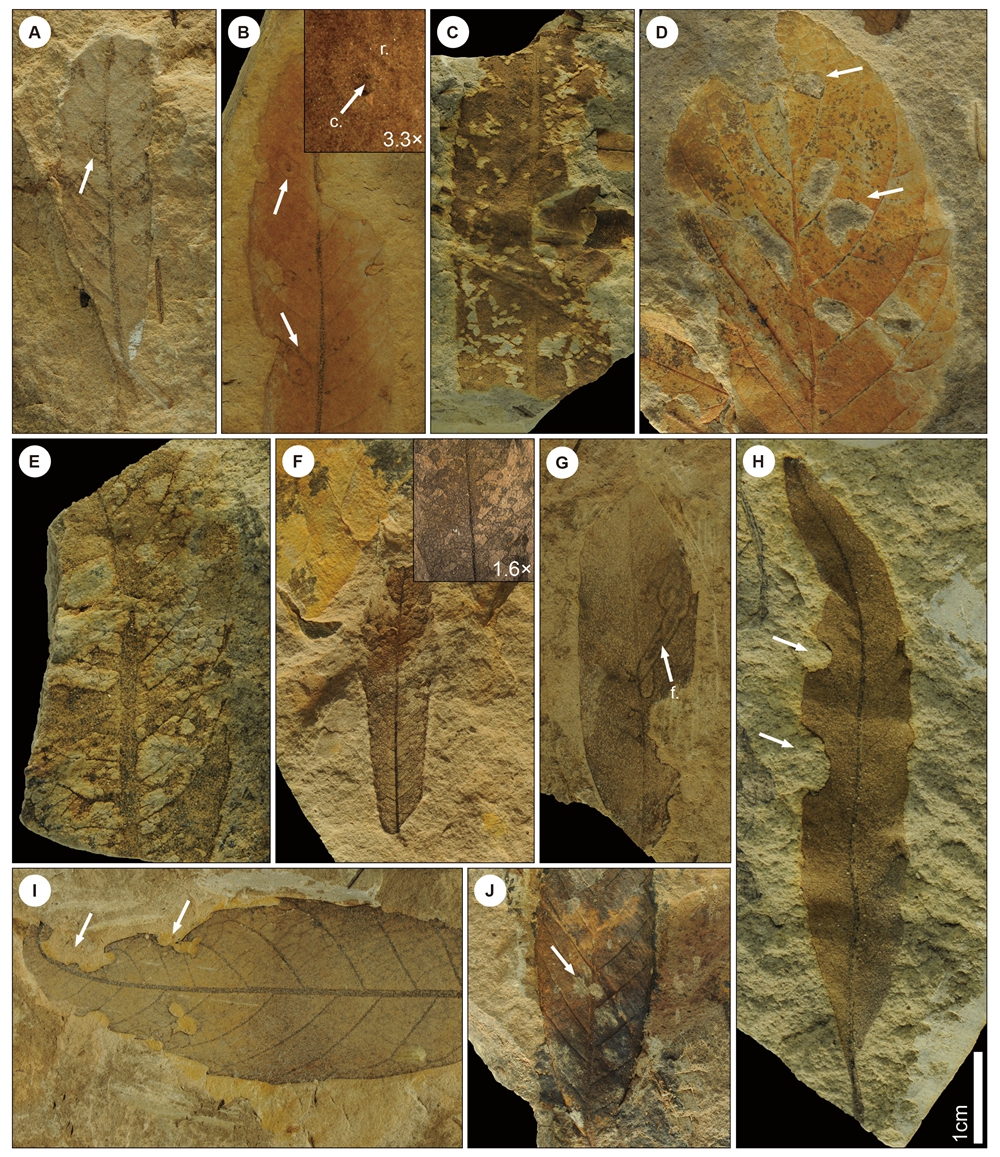
Because in most cases only few herbivore fossils could be found together with a fossil leaf assemblage, investigations of insect damage on plant fossils provide opportunities for the understanding of herbivore activities under paleoenvironmental changes in the geological past.
The Eocene–Oligocene transition (EOT) is an important time interval in the Cenozoic, when the global climate shifted from the ‘greenhouse’ to the ‘icehouse’. However, the effects of paleoenvironmental changes on plant-herbivore interactions during this period are still poorly understood.
In a study published in Global and Planetary Change, researchers from the Xishuangbanna Tropical Botanical Garden (XTBG) provide comprehensive evidence of plant-herbivore interactions during the EOT on the Qinghai-Tibetan Plateau (QTP). They incorporated two leaf assemblages from the Markam Basin in the southeastern margin of the QTP that existed within a short period of the EOT.
The researchers identified taxonomic composition of the flora, and investigated well-preserved herbivore damage on fossil leaves from two layers of the Lawula Formation in Markam County, SE QTP, China. They also reconstructed paleoclimate conditions by using fossil plant assemblages.
The study provided the first macrofossil evidence for plant diversity changes during the EOT in China. Plant fossil assemblages from two layers in the Markam Basin suggested a sharp change in plant diversity during the EOT. Accordingly, the vegetation changed from a subtropical forest to alpine shrubland.
The global dramatic climate changes in conjunction with the QTP uplift led to a significant change in plant diversity and plant-herbivore interactions, and progressively shaped the unique biodiversity as well as the entire ecosystem in the region.
"Our results shed new light on the influence of paleoenvironmental changes in shaping the evolution of biodiversity as well as the ecosystem on the plateau," said Prof. ZHOU Zhekun, correspondence author of the study.

Morphologies of some functional feeding groups. (Image by DENG Weiyudong)

86-10-68597521 (day)
86-10-68597289 (night)

52 Sanlihe Rd., Xicheng District,
Beijing, China (100864)

